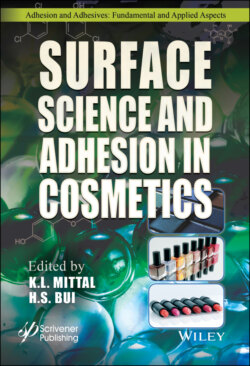Читать книгу Surface Science and Adhesion in Cosmetics - Группа авторов - Страница 49
2.4.2.5 Wax Crystallization Study
ОглавлениеDSC was used to study the crystallization and melting behaviors of wax and wax-oil systems. The samples were heated from -30 to 140°C at a rate of 5°C/ min. After holding at 140°C for 5min, the samples were allowed to crystallize upon cooling at 5°C/min from the melt of 140°C to - 30°C. The samples were heated again from -30°C to 140°C at the same rate as cooling. Figure 2.3 shows the cooling and heating cycles for an oil-wax gel system. The parameters such as the crystallization temperature, Tc, melting temperature Tm and the enthalpies of crystallization ΔHc (J/g) and melting ΔHm (J/g) of the wax – oil systems were obtained from DSC thermograms. In addition, the starting crystallization temperature Tc,i and final melting temperature Tm,f are used in the analysis. The relative crystallinity of the samples during cooling or heating process, Xc (%), can be calculated using enthalpy of crystallization or enthalpy of melting value of 100 % crystalline polyethylene wax (PE).
The relative crystallinity Xc (%) from cooling or from melting is calculated via either equation:
(2.1)
Figure 2.3 DSC thermogram of an oil-wax gel system.
Figure 2.4 Lipstick sample preparation for SEM investigation.
(2.2)
where ΔHc0 and ΔHm0 are the enthalpies of crystallization and melting for 100% PE wax, respectively and w is the weight fraction of the PE wax in the oil-wax system.
